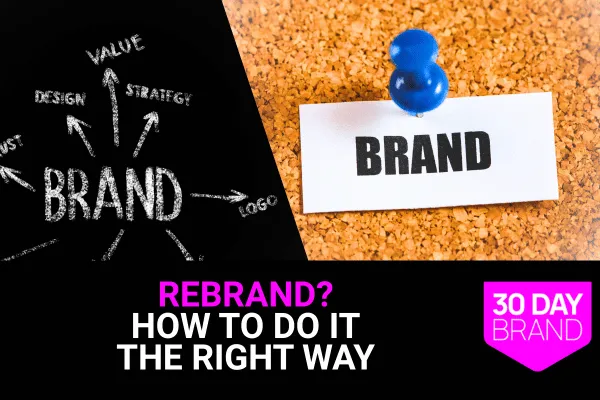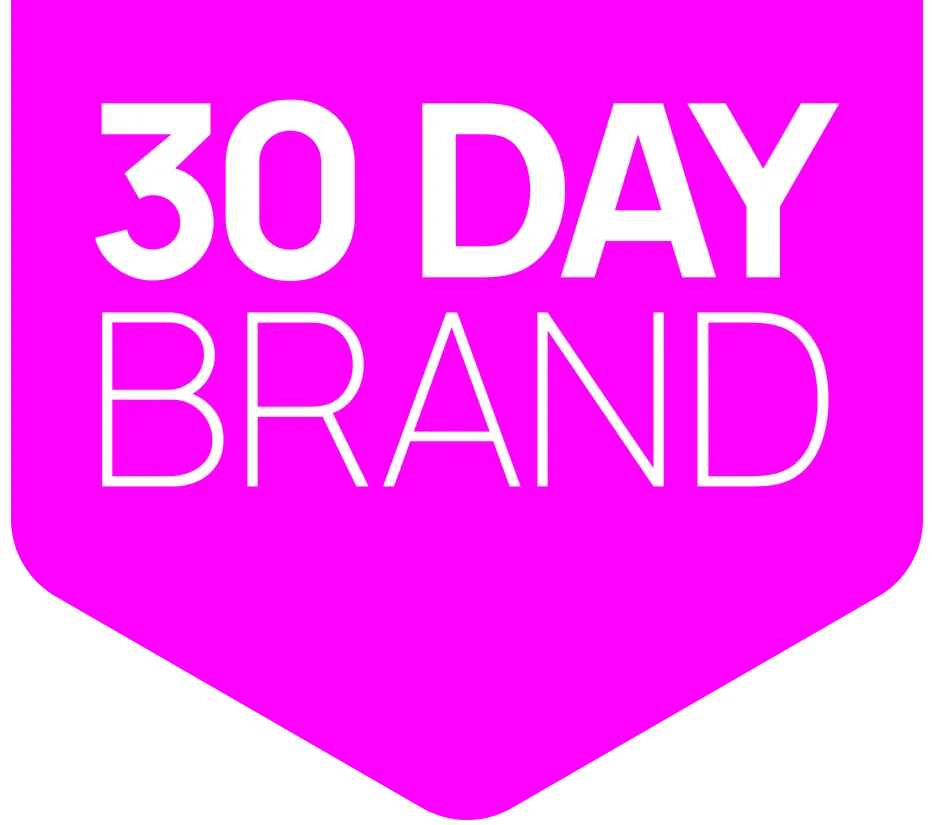
B2B Rebranding Strategy: When and How to Rebrand Your Business
B2B Rebranding Definition
B2B rebranding is a strategic reset of positioning, identity, and messaging to match growth goals. It changes market perception and sales performance.
Strong brands earn more and close faster. Premium brands command 15–20% higher prices (McKinsey, 2023). Clear positioning improves win rates. Win rates rise 31% with stronger positioning (Gartner, 2023). Tight execution cuts friction. Effective programs shorten cycles within 90 days (Forrester, 2024).
This guide serves founder-led B2B firms building a durable client acquisition system with a practical business messaging framework. Start with the B2B branding guide.
The 20 Rebranding Strategies
Item 1: Rebrand Triggers
What it is: Conditions that justify a full reset.
How to do it:
Check strategy shifts that change markets.
Check service changes that add offerings.
Check M&A events that alter equity.
Expected results: Clear business case before spend.
Time to implement: 1 week.
Background: rebranding strategy overview.
Item 2: Refresh vs Rebrand Matrix
What it is: Decide evolution or revolution.
How to do it:
Map equity strength against change size.
Choose refresh for optimization.
Choose rebrand for repositioning.
Expected results: Right-sized scope.
Time to implement: 2 days.
Item 3: Strategic Alignment Check
What it is: Tie brand to business plan.
How to do it:
List 3-year goals with numbers.
Score current fit against goals.
Identify gaps to close.
Expected results: Aligned roadmap.
Time to implement: 3 days.
Item 4: Stakeholder Consensus
What it is: Leadership unity before design.
How to do it:
Workshop goals and risks.
Approve success metrics.
Set decision rights.
Expected results: Fewer reversals.
Time to implement: 1 week.
Item 5: Customer and Market Research
What it is: Evidence before direction.
How to do it:
Interview key accounts for language.
Run perception surveys for gaps.
Map competitor claims to avoid sameness.
Expected results: Proof-led choices.
Time to implement: 2–3 weeks.
See positioning context: B2B brand positioning.
Item 6: Positioning Platform
What it is: Category, audience, and “only” claim.
How to do it:
Write problem, proof, outcomes.
Stress-test against rivals.
Gain CFO and sales buy-in.
Expected results: Defensible differentiation.
Time to implement: 1 week.
Guide: brand messaging framework.
Item 7: Messaging Architecture
What it is: Promise → value props → key messages.
How to do it:
Keep 3–5 value props.
Add proof and clear CTAs.
Segment by role and industry.
Expected results: Faster comprehension.
Time to implement: 1 week.
Playbook: B2B brand messaging.
Item 8: Identity System
What it is: Logo, color, type, layout, imagery.
How to do it:
Design for trust before flair.
Test small sizes and contrast.
Document usage rules.
Expected results: Higher credibility.
Time to implement: 4 weeks.
Design guide: brand identity design.
Item 9: Brand Architecture
What it is: Parent, sub-brand, and naming logic.
How to do it:
Define levels and roles.
Simplify portfolios where possible.
Set co-branding rules.
Expected results: Clear navigation.
Time to implement: 2 weeks.
Item 10: Implementation Phasing
What it is: Sequence work to reduce risk.
How to do it:
Roll out digital first.
Update sales materials next.
Then print and environments.
Expected results: Less disruption.
Time to implement: 8–12 weeks.
Structure ideas: B2B branding guide.
Item 11: Internal Training
What it is: Make teams brand fluent.
How to do it:
Run enablement sessions.
Provide templates.
Certify presenters.
Expected results: Consistent delivery.
Time to implement: 2 weeks.
Item 12: Customer Communication Plan
What it is: Reduce confusion and churn.
How to do it:
Pre-announce to customers.
Explain benefits and timelines.
Offer support paths.
Expected results: Retention protection.
Time to implement: 1 week.
Item 13: PR and Launch Strategy
What it is: Announce with intent.
How to do it:
Choose big-bang or phased.
Align press, site, social.
Arm sales with talk tracks.
Expected results: Clear market signal.
Time to implement: 2–4 weeks.
Item 14: Sales Enablement Update
What it is: Rebrand into decks and proposals.
How to do it:
Rebuild pitch and proof.
Add objection blocks.
Standardize CTAs.
Expected results: Higher win rates.
Time to implement: 2–3 weeks.
Item 15: KPI Framework
What it is: Track brand and revenue impact.
How to do it:
Monitor awareness, recall, SOV.
Track win rate, deal size, cycle.
Measure NPS and retention.
Expected results: Measured ROI.
Time to implement: 2 days.
Benchmarks: branding best practices.
Item 16: Governance Model
What it is: Keep usage on track.
How to do it:
Appoint brand owners.
Create approval flows.
Audit quarterly.
Expected results: Fewer deviations.
Time to implement: Ongoing.
Item 17: Digital Asset Management
What it is: Control files and versions.
How to do it:
Centralize the library.
Set permissions by role.
Retire old assets.
Expected results: Less inconsistency across teams.
Time to implement: 3 days.
Item 18: Budget Planning
What it is: Fund the whole journey.
How to do it:
Scope strategy, design, rollout.
Add contingency for risks.
Phase by impact.
Expected results: No midstream cuts.
Time to implement: 3 days.
Item 19: Risk Register
What it is: Anticipate and neutralize issues.
How to do it:
Log risks and owners.
Set triggers and actions.
Review weekly.
Expected results: Fewer surprises.
Time to implement: 1 day.
Item 20: Post-Launch Optimization
What it is: Improve with data.
How to do it:
Survey customers and staff.
Track KPIs monthly.
Iterate messages and assets.
Expected results: Compounding gains.
Time to implement: Ongoing.
Quick Implementation Guide
Start: Align goals and run interviews. Map competitors.
Then: Write positioning and build the messaging hierarchy.
Measure: Awareness, win rate, cycle, NPS, retention.
Key Statistics
15–20% price premium for strong brands (McKinsey, 2023).
31% higher win rates with clear positioning (Gartner, 2023).
90-day cycle reduction after focused rebrands (Forrester, 2024).
See execution patterns in the brand identity guide.
FAQ: B2B Rebranding Strategy
Q: Do we need a full rebrand or a refresh?
A: Use equity versus change. Refresh for optimization. Rebrand for strategy shifts.
Q: How long does a rebrand take?
A: Six to twelve months for full programs. Refreshes take two to four months.
Q: What should we fix first?
A: Positioning and messaging. Then identity and rollout.
Q: Big-bang or phased launch?
A: Big-bang gives clarity and impact. Phased reduces risk.
Q: How do we protect existing equity?
A: Keep recognizability where it helps. Explain changes clearly.
Q: What KPIs matter most?
A: Win rate, deal size, cycle length, and retention.
Q: How do we align sales and marketing?
A: Train on the message map. Use shared templates.
Q: Where should research begin?
A: Customer interviews and win/loss analysis.
Q: What is the biggest risk?
A: Inconsistency across touchpoints. Solve with governance.
Q: Where can I learn supporting tactics?
A: See the brand identity guide and the brand messaging framework.
Let’s Plan a High-Signal Rebrand: Next Steps
A strategic rebrand can power your 30-day brand system and done-for-you marketing motion. It must be measured and defensible.
Run the free Brand Message Audit. In minutes, see if you need a refresh or a full rebrand.










